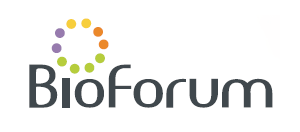the 23th ANNUAL MEETING - CONFERENCE & EXHIBITION
21-22 JANUARY 2020, THE DAVID INTERCONTINENTAL HOTEL, TEL AVIV, ISRAEL
The Challenge of Producing RM with Veterinary Drug Residues
Alfredo M. Montes Ninio, President, Microbioticos, Sao Paulo, Brazil (presidente@microbioticos.com)
Rosario E., Microbioticos, Sao Paulo, Brazil
In order to produce biological reference material from veterinary drugs residues, a pure drug is needed. This drug ought to be characterized by a known supplier, which should have all certain physical and chemical properties. Afterwards, the drug must be administered to an animal, or group of animals, that have previously performed clinical studies to verify their healthy physiologically conditions. Once the drug is administered, the animal must be sacrificed. As the animal’s tissue, which will produce reference materials, must be extracted for analysis. This will be done throughout precise methods, such as mass spectrometry, to verify its residue amount.
Thereafter, the process by which the reference material will be preserved should be determined. As well as its form of packaging. The preservation process recommended today is lyophilisation. One should also make artificial aging experiments to establish which will be the span of this reference material. These will be performed throughout temperature and humidity test to establish how long they last and knowing the stability of the molecule of course, and there are also some that are metabolized continuously in the material. Checks must also be made periodically until the stock that is to be distributed is exhausted.
A question one must ask, is whether it is worth doing all this process. Since the stability of veterinary drugs residues in animal tissue is highly relative. Further, reference materials, in many cases, have become popular for accreditation, rather than performing permanent analyses controls. This is due to the fact that, it is easier for auditors to evaluate the quality of the methods. Nevertheless, today one should mainly explore statistical reference materials. Which consists of using Big Data as a source of information of the resulted data from accumulated signals in the chromatograms, etc.
Short Biography of Presenting Author
Date of birth:November 27th 1950
Citizenship: Argentinean
Training: Degree in Veterinary
Institution and dates
- University of Buenos Aires
- Faculty of Veterinary Sciences
- Years attended: 1969-1975
- University of Buenos Aires
- Faculty of Economics
- Years attended: 1976-1979
University degree
- Degree in Veterinary
- Approved by the Ministry of Education of Spain
Membership of professional bodies:
- AOAC International. Organization dedicated to promoting analytical quality. President Europe Section 2016-2017.
- Advisory Board (AB) of CONffIDENCE (EU FP7 research project No. 211326–Contaminants in Food and Feed: Inexpensive Detection for Control of Exposure).
- Executive Committee of the Union International des Laboratoires Indepéndants–UILI.
- Executive Committee of IAAC–Inter American Accreditation Cooperation.
Present position: International expert in food safety programmes.
Key qualifications:
- Expert in quality standards, metrology and laboratory accreditation according to ISO-17025 standard.
- Expert in food safety.
Specific international experience:
South Africa 2003-2004-2005-2006-2007
Austria 1997-2003-2005
Benin 2007
EE.UU 2008
Professional experience:
2007-at present -
Paraguay
MICROBIOTICOS PARAGUAY
Director
Laboratory of High Complexity Testing. Contaminants in food of animal origin
2006-present - Uruguay
MICROBIOTICOS URUGUAY
Director
Reception Office. Contaminants in food of animal origin
2005- Austria
Joint FAO / IAEA. Protection Section Food and Environment -
Food Safety Expert International cooperation in programs of contaminants in food of animal origin
1994-2000 - Argentina
FOOD SAFETY
Director
Organic products certification body
1992-2000 - Argentina
XENOBIOTICOS
Quality Manager
Laboratory analysis of contaminants in food of animal origin
1994-present -
Brazil
MICROBIOTICOS
Director
Laboratory analysis of contaminants in food of animal origin
1986-1990 - Argentina
National Health Service and Food Quality - SENASA
Assistant of the National Administrator
Technical and Scientific Advisor. Coordinator of the National Residue Programme
1985-1986 - Argentina
National Health Service and Food Quality - SENASA
Assistant of the Director of Inspection Service of Food Production
Assist the Director of Inspection of Food Production processing of scientific and technical issues in the management of the Directorate
1984-1985 - Argentina
Meat Industry Union of Argentina - UNICA
Manager
Hous
Union Trade union of the food export industry of Argentina
1978-1980 - Argentina
Faculty of Veterinary Sciences. University of Buenos Aires
Assistant Professor
Zootechnics III
1976-1977 - Argentina
Faculty of Veterinary Sciences. University of Buenos Aires
Assistant Professor
Veterinary in Public Health
1975-1977 -
Argentina
Faculty of Veterinary Sciences. University of Buenos Aires
Professor
Biochemistry
Other relevant information: Training conducted
“MASTER ON INDUSTRIAL QUALITY”. National Institute of Industrial Technology (INTI) - National University of San Martín (UNSAM). 1996-1997
“ANIMAL HEALTH PLANNING”. Pan-American Centre for Zoonosis. Pan-American Health Organisation, World Health Organisation. 1979
Organized & Produced by:

POB 4043, Ness Ziona 70400, Israel
Tel.: +972-8-9313070, Fax: +972-8-9313071
Site: www.bioforum.co.il,
E-mail: bioforum@bioforum.co.il